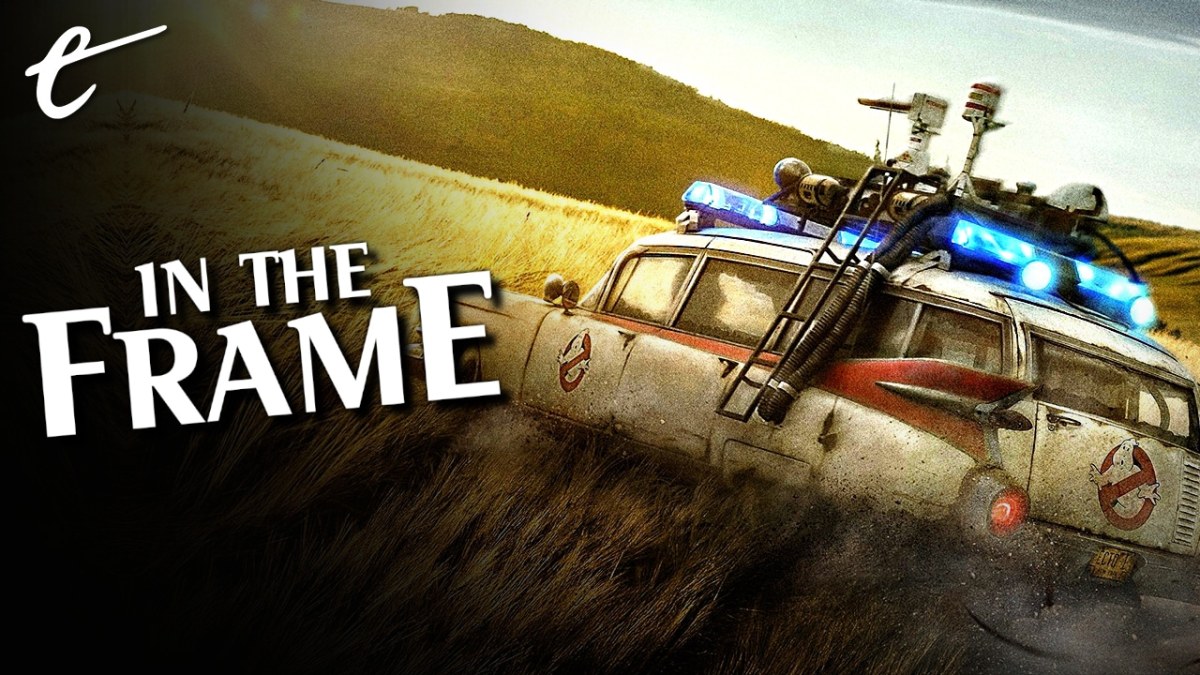This article contains spoilers for Ghostbusters: Afterlife.
Modern multimedia franchises have come to be dominated by long-delayed “legacyquels.” These are often exercises in nostalgia, built around the promise of resurrecting long-dormant properties and bringing back beloved actors from decades prior. There are movies like the Creed franchise, Bill & Ted Face the Music, the Star Wars sequel trilogy, and Ghostbusters: Afterlife. There are television shows like Star Trek: Picard, Cobra Kai, and Saved by the Bell.
On the surface, these throwbacks are about celebrating these beloved characters and properties. The second teaser trailer for Star Wars: The Force Awakens climaxed with Han Solo (Harrison Ford) declaring “we’re home.” The last trailer for Ghostbusters: Afterlife built to a crescendo as Peter Venkman (Bill Murray) asked audiences, “Hey, have you missed us?” It doesn’t matter what the tone of the original property was; the bulk of these franchise extensions venerate their older characters like religious artifacts.
This belies an interesting tension at play within so many of these nostalgic sequels. After all, the nature of storytelling suggests that these characters have by and large completed their journeys. These characters have had their time in the sun. They were the center of the original films, after all. Luke Skywalker (Mark Hamill) and his allies got to defeat the Empire in the original Star Wars. Peter Venkman and his partners defeated Gozer (Slavitza Jovan) in the original Ghostbusters.
The best of these nostalgic legacyquels understand this. Although it is technically a legacy sequel to the Rocky franchise, Creed consciously sidelines Rocky Balboa (Sylvester Stallone) by casting him as a mentor to the title character Adonis “Donnie” Creed (Michael B. Jordan). The movie clearly loves Rocky and gives him his own subplot about battling with cancer, but it is structured so that Donnie makes his own journey in his own way from his own start to his own ends.

More often, these kinds of belated films are preoccupied with recreating the exact story of the original films, right down to replicating antagonists. In The Force Awakens, the First Order feels very much like an extension of the Empire that Luke defeated in Return of the Jedi. In The Rise of Skywalker, Emperor Palpatine (Ian McDiarmid) has “somehow” returned after dying in Return of the Jedi. In Afterlife, the original Ghostbusters reunite to fight Gozer (Olivia Wilde) once again.
To be fair, sometimes these failures are less literal and more abstract. In Star Trek: Picard, Jean-Luc Picard (Patrick Stewart) once again finds himself fighting for the rights of sentient artificial life forms, a recurring trend on Star Trek: The Next Generation several decades earlier. In Cobra Kai, Daniel LaRusso (Ralph Macchio) and Johnny Lawrence (William Zabka) are middle-aged men stuck playing out the petty feud that began in The Karate Kid three decades earlier. It’s all unfinished business.
These sorts of sequels increasingly play as very self-serious and self-important takes on the “you had one job” memes, underscoring the idea that these beloved characters failed in what was effectively their one simple task. If Luke didn’t actually defeat the Empire and topple the Emperor in Return of the Jedi, then perhaps he shouldn’t seem so satisfied with himself? If the Ghostbusters didn’t defeat Gozer in the original Ghostbusters, that closing celebration feels somewhat unearned.
There is something profoundly depressing in all of this, particularly because this generational skepticism might be well-earned. It seems appropriate that these movies often find younger characters confronted with messes that their elders failed to actually clean up, and the theme might resonate with younger audience members facing a potential climate apocalypse or the modern housing market. There’s something timely and resonant in these stories of failed elder statesmen.

In the case of Afterlife, there’s a hefty dose of metatext at play. Director Jason Reitman has talked about how Afterlife is about working out his “complicated” relationship with his father Ivan, who directed the original Ghostbusters. The younger Reitman is arguably directing Afterlife because the success of his father’s Ghostbusters franchise contributed to a blockbuster-driven cinematic climate where his smaller indie projects like Young Adult or Tully struggled to reach an audience.
There is nothing wrong with playing out generational conflict with these blockbuster franchises. After all, the original Star Wars was in many ways about a generation working out a complicated relationship with those who came before, as Luke tries to reconcile himself to the knowledge that his war hero father Anakin (Sebastian Shaw) was also the villainous Darth Vader (James Earl Jones/David Prowse). It spoke to a generation reeling from betrayals like Vietnam and Watergate.
However, there’s a tension within movies like The Rise of Skywalker and Ghostbusters: Afterlife that the moves can never quite reconcile with this recurring fixation on generational failure. Movies like The Rise of Skywalker and Afterlife are too reverential of their older heroes to actually follow these themes to their conclusion. They are celebratory in tone, treating these returning characters like conquering heroes to be lauded — often showing up at the last minute to usurp the younger generation.
Some of these stories manage the tonal balance. Bill & Ted Face the Music succeeds where a lot of these sequels fail because it largely understands the absurdity of the task assigned to William “Bill” S. Preston Esq. (Alex Winter) and Ted “Theodore” Logan (Keanu Reeves) to “unite the world and save reality as we know it.” The joke was never that Bill and Ted failed to accomplish that; the joke was the absurdity of resting the fate of the world on Generation X, previously written off as “slackers.”

Cobra Kai starts in a similar position to Bill & Ted Face the Music, acknowledging the absurdity of two middle-aged men trying to recapture their high school glory days to escape the mundanity of the lives that they live. In the first season, the bulk of the joke rests in Johnny’s self-mythologizing and Danny’s middling success as the owner of a local auto-dealer. However, there is a frustrating drift towards earnest reverence as the show goes on, taking Johnny and Danny more seriously.
The handful of franchise films that do confront this internal tension tend to attract vocal responses from certain sections of fandom. The Last Jedi is the only one of the Star Wars sequel trilogy that actually grapples with what it means for Luke to have to hand over the struggle to a new generation. The film ultimately affirms the heroism of trying and the value of Luke’s idealism as a virtue unto itself, but some fans insisted that it was not suitably reverential to the iconic hero.
The result of all of this is a paradox that is impossible to reconcile. Ghostbusters: Afterlife is largely built around the absent character of Egon Spengler, played by Harold Ramis in the original film. Afterlife reveals that one day Egon abandoned his friends, his wife, and his children without giving them any reason or justification. He just moved to a farm in Oklahoma, taking the bulk of the team’s equipment with him. His old friend Ray Stantz (Dan Aykroyd) opines that “Egon Spengler can rot in hell.”
Ghostbusters: Afterlife follows the family that Egon abandoned, his daughter Callie (Carrie Coon), and her children Phoebe (McKenna Grace) and Trevor (Finn Wolfhard). After Egon’s death and facing eviction from her apartment, Callie moves her children to the farmhouse that Egon abandoned. On arrival, she is informed that not only did he leave her the run-down old house, but also a sizable amount of debt on top of her existing obligations. He also indirectly places Phoebe and Trevor in mortal danger.

Naturally, Afterlife is about Callie, Phoebe, and Trevor reconciling with Egon. It’s revealed that Egon moved to the farm to keep watch for Gozer and spent decades preparing for the apocalypse. Phoebe and Trevor help complete their grandfather’s work, with a last-minute assist from the original Ghostbusters to save the day — including a computer-generated Ramis. Callie discovers a wall of photographs that Egon kept of her, watching over her from afar.
Afterlife struggles to square this circle. The nostalgic appeal to Ghostbusters fans would never allow for any meaningful criticisms of Egon’s behavior, but they haunt the film’s margins. Egon’s partner is never even mentioned in the film, the script seeming to pay her as much attention as Egon did. Nobody points out that Egon could have called, that he could have written, that he could have maintained contact. Even divorced parents can remain active in the lives of their children.
There’s no room for that in Ghostbusters: Afterlife. The music builds. The characters smile. In a moment reminiscent of The Rise of Skywalker, Callie affirms her identity as “Callie Spengler” for the first time. Afterlife cynically closes with a nostalgic tribute “for Harold,” with nobody seemingly bothered that they turned the original film’s weird science nerd into a deadbeat dad. Any uncomfortable implications are drowned out as the beats of the familiar theme tune start playing. Busting should make you feel good, after all.
This is the crisis facing modern legacyquels, from The Rise of Skywalker to Ghostbusters: Afterlife. Underneath all the celebration and the worship, these films are built on the unsettling premise that the older generation failed to make the world a better place and now their children are forced to pay the price. Beneath the in-jokes and references, deep inside the yolks of all those Easter eggs, Afterlife is a horror story filtered through sepia-tinted nostalgia.





